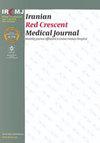伊朗血液制品成本:设拉子输血组织使用作业成本法的案例研究
IF 0.2
4区 医学
Q3 MEDICINE, GENERAL & INTERNAL
引用次数: 0
摘要
背景:尽管血液是捐献而不是购买的,但采集、储存和检测病毒标志物的费用很高。在血液成本共识会议(COBCON)期间,作业成本法(ABC)被提议作为计算制备单位血液成本的标准方法。目的:ABC可供任何支付血液或血液制品费用的组织使用。考虑到有限的血液来源和成本评估研究的重要性,它被用来确定伊朗每单位异基因血液的成本。方法:这项横断面描述性分析研究于2020-2021年在设拉子输血组织(伊朗设拉子)进行。我们使用ABC方法来确定伊朗每单位异基因血液的成本。在本研究中,活动中心分为高级、中级和最终活动中心。每个活动中心的资源由人力资源、消耗品、建筑、设备和能源组成。结果:在研究的子单元中,分别调查了生产血液的直接和间接成本。准备一个血液单位的最终估计成本几乎为1300万IRR(≈308美元)。根据我们的研究结果,间接成本占生产单位血液成本的很大一部分(86.45%),而直接成本仅占13.55%。结论:从所获得的结果来看,一单位血液的成本远高于伊朗输血组织估计的全国平均水平。需要对其他血液制品的成本和间接成本降低策略进行额外的研究。本文章由计算机程序翻译,如有差异,请以英文原文为准。
Cost of Blood Products in Iran: A Case Study of the Shiraz Blood Transfusion Organization Using Activity-based Costing
Background: Although blood is donated rather than purchased, collecting, storing, and testing it for viral markers is expensive. During the Cost of Blood Consensus Conference (COBCON), activity-based costing (ABC) was proposed as a standard way to figure out the cost of preparing a unit of blood.
Objectives: The ABC can be used by any organization that pays for blood or blood products. It was used to determine how much each unit of allogeneic blood costs in Iran, considering the limited blood sources and the importance of cost evaluation studies.
Methods: This cross-sectional, descriptive-analytical study was conducted at Shiraz Blood Transfusion Organization in 2020-2021 (Shiraz, Iran). We used the ABC method to determine how much each unit of allogeneic blood costs in Iran. In this study, activity centers were divided into high-level, intermediate, and final activity centers. The resources of each activity center were made up of human resources, consumables, buildings, equipment, and energy.
Results: Direct and indirect costs of producing blood were separately investigated in the studied sub-units. The final estimated cost of preparing one blood unit was almost 13 million IRR (≈308 USD). According to our findings, indirect costs comprised a significant portion (86.45%) of the cost of producing a unit of blood, while direct costs accounted for only 13.55%.
Conclusion: As evidenced by the obtained results, the cost of one blood unit was far more than the national average estimated by the Iran Blood Transfusion Organization. There is a need for additional research on the cost of other blood products and indirect cost reduction strategies.
求助全文
通过发布文献求助,成功后即可免费获取论文全文。
去求助
来源期刊

Iranian Red Crescent Medical Journal
MEDICINE, GENERAL & INTERNAL-
CiteScore
1.16
自引率
0.00%
发文量
0
期刊介绍:
The IRANIAN RED CRESCENT MEDICAL JOURNAL is an international, English language, peer-reviewed journal dealing with general Medicine and Surgery, Disaster Medicine and Health Policy. It is an official Journal of the Iranian Hospital Dubai and is published monthly. The Iranian Red Crescent Medical Journal aims at publishing the high quality materials, both clinical and scientific, on all aspects of Medicine and Surgery
 求助内容:
求助内容: 应助结果提醒方式:
应助结果提醒方式:


